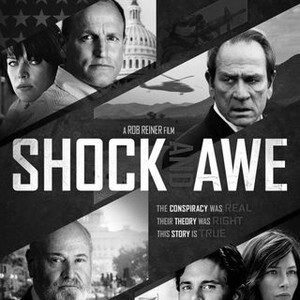Introduction
In the realm of decision-making, our minds are susceptible to various cognitive biases and fallacies that can lead to irrational choices. One such mental model is Shock & Awe, which refers to the tendency of individuals or groups to make impulsive decisions based on immediate emotional reactions or dramatic events, without considering the long-term consequences. Anchored in human psychology, the Shock & Awe model is prevalent in our day-to-day lives, influencing personal decisions, business scenarios, and public policy-making. This blog post aims to explore the intricacies of the Shock & Awe mental model, highlight its relevance in decision-making, provide examples of its occurrence, examine the underlying biases, and offer practical strategies to avoid succumbing to this cognitive trap.
Defining the Shock & Awe Model: Reacting Impulsively
The Shock & Awe mental model can be defined as a cognitive bias in which individuals or groups make impulsive decisions based on immediate emotional reactions or dramatic events, often without fully considering the long-term consequences. It arises from our natural tendency to be strongly influenced by vivid and shocking stimuli, which can override our rational thinking processes.
Relevance in Decision-Making Processes
The Shock & Awe mental model holds significant relevance in decision-making processes as it can lead to irrational choices that neglect critical evaluation of alternatives and fail to consider the broader context. By reacting impulsively to shocking or emotionally charged events, decision-makers may overlook critical information, make hasty judgments, and act contrary to their long-term best interests.
Examples of the Shock & Awe Mental Model
Personal Life Decisions:
An individual who experiences a sudden financial windfall may fall prey to the Shock & Awe mental model. Overwhelmed by the newfound wealth, they may make impulsive decisions, such as extravagant purchases or risky investments, without fully considering the long-term financial implications.
Business Scenarios:
In a business context, a company facing intense competition may react impulsively to a competitor’s aggressive marketing campaign. In an attempt to regain market share, they may hastily launch a costly marketing campaign without thoroughly evaluating its effectiveness or considering alternative strategies.
Public Policy-Making:
In public policy-making, the Shock & Awe mental model can manifest when policymakers respond immediately to public outcry following a shocking event or crisis. In an effort to appease public sentiment, they may rush to implement policies without thoroughly analyzing their long-term impact or considering alternative solutions.
Mental Biases and Underpinnings of Shock & Awe
The Shock & Awe mental model is influenced by several cognitive biases and psychological underpinnings. Some of these include:
Availability Heuristic:
The availability heuristic is the tendency to rely on immediate examples or vivid events that come to mind when making judgments or decisions. In the context of Shock & Awe, individuals are more likely to be influenced by shocking events or emotionally charged experiences that are readily available in their memory.
Emotional Bias:
Emotions play a significant role in the Shock & Awe mental model. Strong emotional reactions can override rational thinking, leading individuals to make impulsive decisions based on immediate feelings rather than a careful evaluation of the situation.
Anchoring Bias:
The anchoring bias can also contribute to the Shock & Awe mental model by causing individuals to fixate on the immediate event or shocking stimulus, anchoring their decision-making process to this singular event and neglecting alternative perspectives or critical analysis.
Identifying and Mitigating Shock & Awe
To avoid succumbing to the Shock & Awe mental model, individuals can employ the following strategies:
Embrace Reflective Thinking:
Encourage a reflective thinking process that involves stepping back and evaluating the situation objectively. Take the time to consider the long-term consequences, gather relevant information, and evaluate alternatives before making a decision.
Seek Diverse Perspectives:
Actively seek out diverse perspectives and opinions, especially when faced with shocking or emotionally charged events. Engage in constructive dialogue, consult with experts, and consider the broader context to gain a comprehensive understanding of the situation.
Implement Decision-Making Frameworks:
Utilize decision-making frameworks, such as cost-benefit analysis or scenario planning, to evaluate the potential outcomes and trade-offs of different options. These frameworks provide a structured approach that promotes objective decision-making and reduces the influence of impulsive reactions.
Delay Impulsive Reactions:
When confronted with shocking or emotionally charged situations, consciously delay impulsive reactions. Take a step back, allow emotions to settle, and give yourself time to gather information, consider alternatives, and evaluate the situation more rationally.
Conclusion
The Shock & Awe mental model can lead individuals and groups astray by triggering impulsive decision-making based on immediate emotional reactions or dramatic events. By understanding the biases and psychological underpinnings that contribute to this mental model, individuals can become more aware of its influence and take proactive steps to mitigate its impact. Through reflective thinking, seeking diverse perspectives, employing decision-making frameworks, and delaying impulsive reactions, individuals can make more informed decisions aligned with their long-term best interests. By avoiding the allure of shock and awe, we can navigate decision-making processes more effectively and achieve better outcomes.
